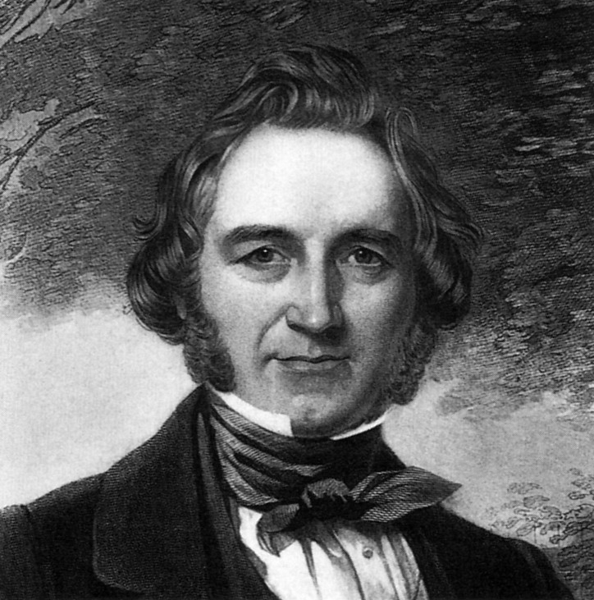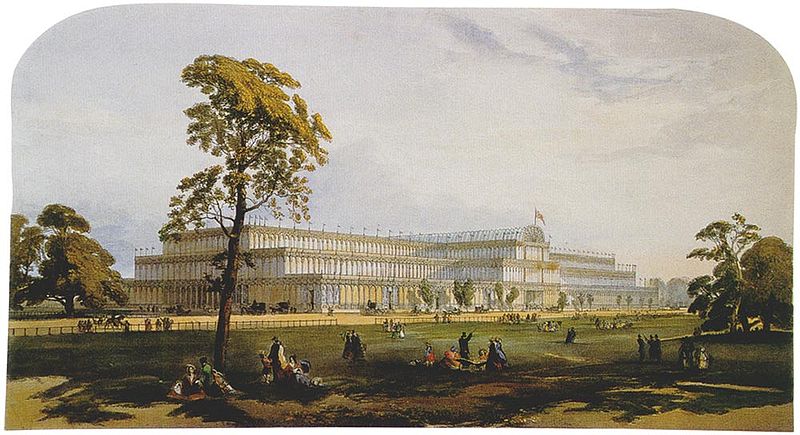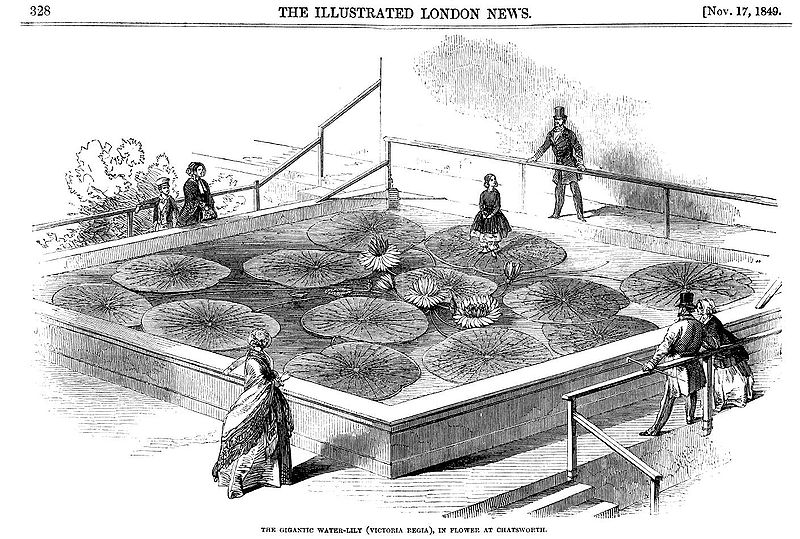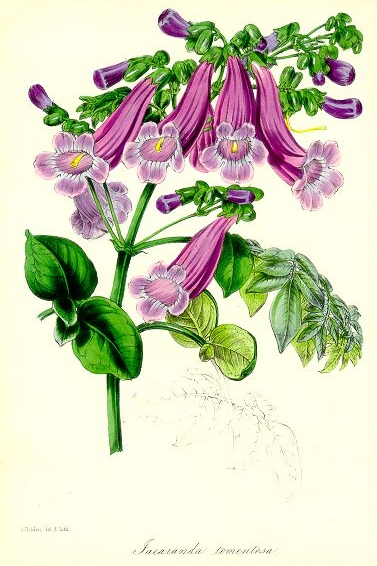<Back to Index>
- Inventor Elisha Graves Otis, 1811
- Architect Sir Joseph Paxton, 1803
- 1st President of the Republic of Tunisia Habib Bourguiba, 1903

Sir Joseph Paxton (3 August 1803 – 8 June 1865) was an English gardener and architect, best known for designing the Crystal Palace.
Paxton was born in 1803, the seventh son of a farming family, at Milton Bryan, Bedfordshire. He became a garden boy at the age of fifteen for Sir Gregory Osborne Page-Turner at Battlesden Park, near Woburn. After several moves, he obtained a position in 1823 at the Horticultural Society's Chiswick Gardens. These were close to the gardens of William Cavendish, 6th Duke of Devonshire at Chiswick House. The Duke frequently met the young gardener as he strolled in his gardens and became impressed with his skill and enthusiasm. The Duke offered the 20-year-old Paxton the position of Head Gardener at Chatsworth, which was considered one of the finest landscaped gardens of the time. Although the Duke was in Russia at the time, Paxton set off for Chatsworth on the Chesterfield coach forthwith, arriving at Chatsworth at half past four in the morning. By his account he had explored the gardens, scaling the kitchen garden wall in the process, and set the staff to work, then ate breakfast with the housekeeper and met his future wife, Sarah Bown, the housekeeper's niece, as he later put it, completing his first morning's work before nine o'clock. They married, and she proved to be supremely capable of managing his affairs, leaving him free to pursue his ideas. He enjoyed a very friendly relationship with his employer who recognised his diverse talents and facilitated his rise to prominence.
One
of his first projects was to redesign the garden around the new north
wing of the house and to set up a 'pinetum', a collection of conifers
which developed into a 40-acre (160,000 m2)
arboretum which still exists. In the process he became skilled in
moving even mature trees. The largest, weighing about eight tons, was
moved from Kedleston Road in Derby. Among several other large projects at Chatsworth, such as the Rock Garden, the Emperor Fountain and the rebuilding of Edensor village, he is best remembered for his glass houses. While
at Chatsworth Gardens, he built enormous fountains - one twice the
height of Nelson's Column - as well as an arboretum, a 300 ft
(91 m) conservatory, and a model village.
In 1837 he secured a cutting of a new waterlily found in Guyana, and
designed a heated pool that enabled him to breed the lily successfully:
within three months its leaves were almost twelve feet wide. However,
the waterlily was too big for any normal conservatory. Inspired by the
huge leaves of the waterlily - 'a natural feat of engineering' - and
tested by floating his daughter Annie on one leaf, he found the
structure for his conservatory. The secret was in the rigidity provided
by the radiating ribs connecting with flexible cross-ribs. Constant
experimentation over a number of years led him to devise his glasshouse
design that inspired the Crystal Palace. With
a cheap and light wooden frame, the conservatory design had a
ridge-and-furrow roof to let in more light and drain rainwater away.
Cunningly, Paxton used hollow pillars to double up as drain pipes and
designed a special rafter that also acted as an internal and external
gutter. All of these elements were pre-fabricated and, like modular buildings, could be produced in vast numbers and assembled into buildings of varied design. In
1832, Paxton developed an interest in glasshouses at Chatsworth where
he designed a series of buildings with "forcing frames" for espalier
trees. Generally considered a landscape gardener, Paxton's superiority in conservatory design earned him recognition as an innovative architect. His position in the House of Commons as Member of Parliament for the Coventry allowed Paxton to dedicate his later years to urban planning projects. At the time the principles of using glass houses was in its infancy and those at Chatsworth were dilapidated. After some experimentation, he designed a ridge and furrow roof which would be at right angles to
the morning and evening sun, with an ingenious frame design which would
admit maximum light - the forerunner of the modern greenhouse. In 1837, Paxton started the Great Conservatory or Stove, a huge cast-iron heated
glasshouse. At the time, the Conservatory was the largest glass
building in the world. The largest sheet glass available at that time,
that by Robert Chance,
was three feet long. Chance managed to produce four foot sheets for
Paxton's benefit. It was heated by eight boilers using seven miles (11
km) of iron pipe and cost over £30,000. There was a central
carriageway and when the Queen was driven through, it was lit with
twelve thousand lamps. However, it was prohibitively expensive to
maintain, and it was destroyed in 1923. It took five attempts to blow
it up. The next great building at Chatsworth came about from the first seeds of the Victoria Regia lily which had been sent to Kew from the Amazon in
1836. Although these had grown, they had not flowered and in 1849 one
seed was given to Paxton to try out at Chatsworth. Within two months
the leaves were four and a half feet in diameter, and a month later it
flowered. It continued growing and it became necessary to build a much
larger house, the Victoria Regia House, the design of which was
inspired by the lily itself. The Great Conservatory was the test-bed for the prefabricated glass and iron structural techniques which Paxton pioneered and would employ for his masterpiece: The Crystal Palace of the Great Exhibition of
1851. These techniques were made physically possible by recent
technological advances in the manufacture of both glass and cast iron,
and financially possible by the dropping of a tax on glass. In 1850 the Royal Commission appointed
to organise the Great Exhibition were in a quandary. An international
competition for a building to house had produced 245 designs, of which
only two were remotely suitable, and all would take too long to build
and would be too permanent. There was an outcry by the public and in
Parliament against the desecration of Hyde Park. Paxton was visiting London in his capacity as a director of the Midland Railway to meet the chairman John Ellis who was also a Member of Parliament.
He happened to mention an idea he had for the hall, and Ellis promptly
encouraged to produce some plans, provided they could be ready in nine
days. Unfortunately he was committed for the next few days, but at a
board meeting of the railway in Derby, it is said he appeared to be
spending much of his time doodling on a sheet of blotting paper.
At the end of the meeting he held up his first sketch of the Crystal
Palace, very much inspired by the Victoria Regia House. The sketch is
now in the Victoria and Albert Museum. He
completed the plans and presented them to the Commission, but there was
opposition from some members, since another design was well into its
planning stage. Paxton decided to by-pass the Commission and published
the design in the Illustrated London News to universal acclaim. Its
novelty was its revolutionary modular, prefabricated design, and use of
glass. Glazing was carried out from special trolleys, and was fast: one
man managed to fix 108 panes in a single day. The Palace was 1 848 feet
long, 408 feet (124 m) wide and 108 feet (33 m) high. It required 4 500 tons of iron, 60 000 cubic feet of
timber and needed over 293 000 panes of glass. Yet it took 2 000 men
just eight months to build, and cost just £79 800. Quite unlike
any other building, it was itself a demonstration of British technology
in iron and glass. In its construction, Paxton was assisted by Charles Fox, also of Derby for the iron framework, and William Cubitt Chairman of the Building Committee. All three were knighted. After the exhibition they were employed by the Crystal Palace Company to move it to Sydenham. Although
he remained the Head Gardener at Chatsworth, the Duke allowed him to
undertake outside work - like the Crystal Palace and his directorship
of the Midland Railway. He worked on public parks in Liverpool, Birkenhead, Glasgow, Halifax and the grounds of the Spa Buildings at Scarborough. In 1850 Paxton was commissioned by Baron Mayer de Rothschild to design Mentmore Towers in Buckinghamshire. This was to be one of the greatest country houses built during the Victorian Era. Following the completion of Mentmore, Baron James de Rothschild, one of Baron de Rothschild's French cousins, commissioned Château de Ferrières at Ferrières-en-Brie near Paris
to be "Another Mentmore, but twice the size". Both buildings still
stand today. Paxton also designed another country house, a smaller
version of Mentmore at Battlesden near Woburn in Bedfordshire. This house was bought by the Duke of Bedford thirty years after its completion, and wantonly demolished, because the Duke wanted no other mansion close to Woburn Abbey. Between
1835 and 1839, he organised plant-hunting expeditions, one of which
ended in tragedy. Tragedy also struck at home when his eldest son died. Paxton was honoured by being a member of the Kew Commission which was to suggest improvements for Royal Botanic Gardens, and by being considered for the post of Head Gardener at Windsor Castle. He became affluent, not so much through his Chatsworth employment, but by successful speculation in the railway industry. In October 1845 he was invited to lay out one of the country's first municipal burial grounds in Coventry. This became the London Road Cemetery. He later became a Liberal Member of Parliament for Coventry from 1854 until his death in 1865. In 1831, Paxton published a monthly magazine, The Horticultural Register. This was followed in 1834 by the Magazine of Botany. There followed in 1840 the Pocket Botanical Dictionary, The Flower Garden in 1850 and the Calendar of Gardening Operations. In addition to these titles he also, in 1841, co-founded perhaps the most famous horticultural periodical, The Gardeners' Chronicle along with John Lindley, Charles Wentworth Dilke and William Bradbury and later became its editor. He
retired from Chatsworth when the Duke died in 1858 but carried on
working at various projects such as the Thames Graving Dock, while
Sarah remained at their house on the Chatsworth Estate. He died in 1865.


